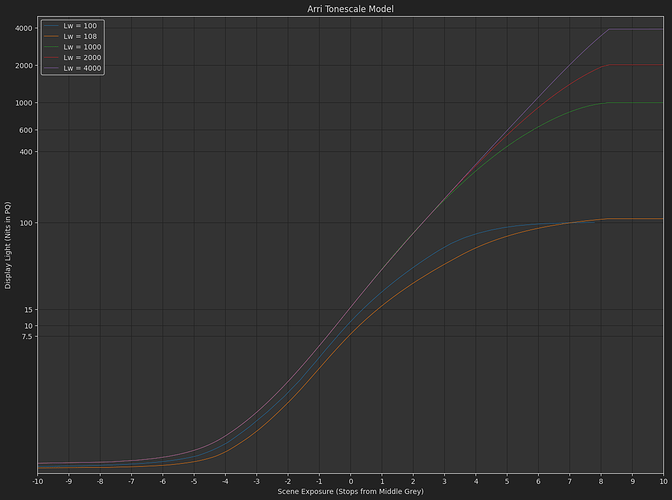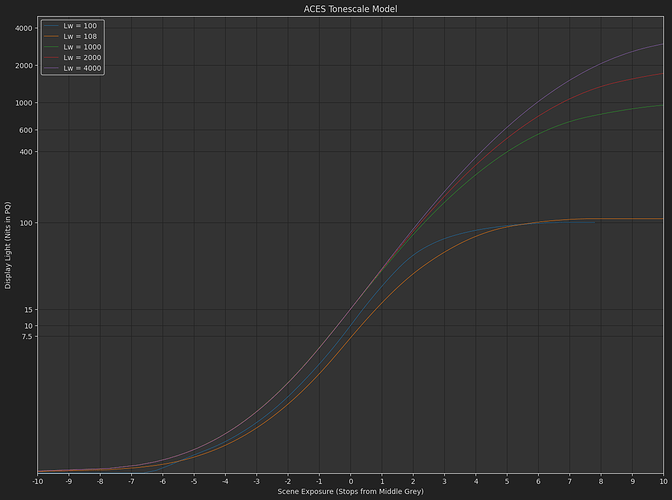No. The Single Stage Tonescale is a bezier spline applied to pure log10 of input linear pixel value.
I would say it does matter quite a bit from a system design perspective. There are pros and cons to each approach.
Glad to hear this!
Naka-Rushton Tonescale Function
I spent a bit of time today experimenting with this alternate idea for a tonescale function (Let’s call this thing the Naka-Rushton Tonescale Function.)
“But what is tone exactly?”)
– The voice of @troy_s in my head
Long story short I came up with a model for how this function might be used across display devices with varying peak luminance. The function might actually work okay for HDR, though I will need to do more testing, and the usual caveat applies that I don’t have a professional quality HDR display device.
I made a colab to plot and compare different tonescale functions. The plots that follow have the following attributes:
- X-Axis: 0.18*2^ev stops from Middle Grey, -10 to +10 stops
- Y-Axis: Display light nits output, Displayed with PQ distribution - (comments welcome on if this is appropriate. I thought it did a good job of showing the behavior of the curves in HDR).
One advantage of the Naka-Rushton tonescale function seems to be controllability. With this function it is pretty easy to get the same shape out of the curve with varying middle grey output y position.
With the model I’m using in OpenDRT, I have to adjust the exponent on the curve as I transition between SDR and HDR. The power is set to ~1.4 in SDR and ~1.2 in HDR. This results in a bit of a change in the shape of the curve between SDR and HDR, especially in shadows. This might be good or bad depending on what you want.
OpenDRT Tonescale Model
The exponent in the Naka-Rushton function just sets the slope through the middle-grey intersection constraint. So if we keep the slope constant, the slope of the curve at grey stays constant. (I’ve added a flare compensation as well so this is not 100% true, but more true than with OpenDRT).
Naka-Rushton Tonescale Model
And as a desmos graph
And quickly hacked into OpenDRT (sat 1.1, no surround compensation model)
OpenDRT_NR.nk (26.8 KB)
The model was created by me by eye, looking at images, and comparing with other tonescales like the Arri transforms. I’ve also included a bit of an exposure boost on middle grey as peak luminance increases, as Daniele suggested in one of the meetings last year. One thing I’m a little worried about is that it is difficult to reduce slope at the top end as peak luminance increases, without changing slope by adjusting the exponent. So this curve might have stronger highlight appearance. Though I can not really confirm or deny this with the display devices I have access to. Any testing from people who have access to a professional quality display would be appreciated.
This weekend I learned me some matplotlib, so I thought it would be fun to use pandas and plot some other tonescales as well.
ARRI Tonescale Model
ACES Tonescale Model
Hope it helps and doesn’t distract too much from the important investigations into dish soaps.



